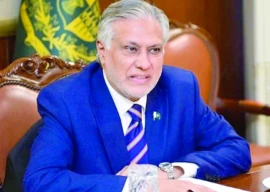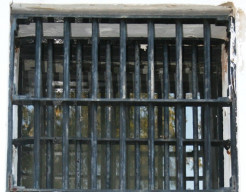
The key issue is one of timing since most of these inflows will eventually come in when a longer time horizon is considered. But Pakistan needs the financing to come in during this financial year, not later. First, given the ongoing sovereign debt crisis in the eurozone, the much hoped for $500 million OGDC convertible bond flotation is dead in the water. Second, Pakistan is still owed some $800 million in connection with the privatisation of PTCL. News reports had said that a high-powered delegation had visited Etisalat recently but, they returned empty-handed. Third, a number of second tier public enterprises have, reportedly been put on the privatisation hit list. This is a slow moving process and in any event, is unlikely to entail big amounts. Fourth, there is the possibility of the sale of 3-G licence but, here again, the process could be slowed by the need to be careful with the bidding process, lest our hyperactive judiciary jumps into the act and stalls everything. Fifth, absent a Letter of Comfort from the IMF which would have served as an endorsement of our macroeconomic policies, the Asian Development Bank has informed Pakistan that there will be no quick-disbursing programme loans to support the budget and the balance of payments. A similar stricture would apply to the World Bank as well.
Sixth, there are the expected official aid inflows. Although the US has frozen some $700 million in aid, a statement by Washington that this does not apply to civilian assistance, leaves a murky picture. In any event, assistance from the US or from other donors is almost entirely tied to projects. Given that the present project ‘pipeline’ is overcrowded and some five years deep, a slowdown here could be a blessing in disguise since it would allow the already-overstretched project implementing authorities to focus on completing the projects they have in hand. Finally, there are reimbursements from the Coalition Support Fund. However, given the present frayed state of US-Pakistan relations, the US government will take their time over ‘verifying’ our bills which are not known for being shining examples of honesty.
The prospect of significantly reduced external financing means that there will be exante ‘financing gaps’ that will have to be filled expost. This would apply to both the domestic and external gap. In the case of the former, the most recent data offers some mind-boggling numbers.
Without any concerted effort at base-broadening (the much-hyped attempt to target Pakistan’s super rich has predictably degenerated into a farce) and combined with unchecked spending pressures at the federal and provincial level, government borrowing for financing the budget, propping up the collapsing public sector enterprises and financing the circular debt and commodity operations, will continue unchecked. If we just take government borrowing for budgetary support, this has risen to Rs668 billion in the first five months of 2011-12 compared to Rs79 billion in the same period in the previous year. That works out to an increase of over eightfold. While borrowing from the State Bank has been sharply curtailed, borrowing from the commercial banks has gone up with negative implications for inflation and crowding-out of the private sector, which is the main engine of growth and jobs in the economy. Indeed, private sector borrowing has increased by only Rs26 billion compared to Rs61 billion in the same period a year ago, a stark reminder of how the government, or the public sector more generally, is pre-empting the bulk of the economy’s resources.
Technically speaking (and ignoring its consequences), borrowing in domestic currency is virtually limitless.
But alas, we cannot print foreign exchange to make up for external financing shortfalls. While those mysterious inflows that we call ‘workers’ remittance’ continue to flow into the economy unabated, exports are slowing sharply as the growth in export volume has not kept pace with, nor managed to offset falling prices. The SBP thinks that exports will fall in value terms this year by as much as five per cent. More worryingly, imports continue to grow strongly, largely driven by higher import prices since the level of domestic activity remains subdued. The current account deficit has surged, and reflecting the double blow of diminished/delayed capital inflows and rising external debt servicing payments, the financing gap is being ‘closed’ by depleting our foreign exchange reserves. These have already fallen by Rs125 billion, compared to a build-up of Rs76 billion in the same period last year — a swing of Rs201 billion.
The prospect of sharply diminished external inflows should have prompted consideration of immediate and forceful macroeconomic adjustment in order to safeguard the balance of payments — even if this compression in demand came at the cost of sacrificing some growth in the short-term. Instead, the government remains in denial and its economic dream team has proven once again — if further proof was needed — that they are incompetent, ineffectual and/or malevolent. If tax revenues are up by 28 per cent and spending is being contained as they claim, what is the Rs668 billion of bank borrowing financing? Once the excess demand from the domestic side ‘spills’ over into the external side via higher imports and inflation takes-off, the economy will be pushed into the face of another balance of payments crisis with all its attendant chaotic and destabilising consequences.
(Kamran Shafi’s Friday column will appear tomorrow)
Published in The Express Tribune, December 23rd, 2011.


















COMMENTS
Comments are moderated and generally will be posted if they are on-topic and not abusive.
For more information, please see our Comments FAQ